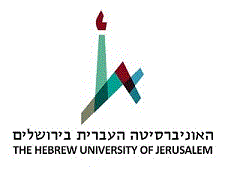EpiSyStem is comprised of 8 leading academic partners and 2 professional industrial partners.
The Network combines chromatin biology in stem cells, early embryos and reprogramming, including the modelling of human neurological, chromatin-related diseases with bioinformatics, epigenetics / epigenomics, and systems biology at the population and single cell / single embryo level.
This multidisciplinary approach enables profound training and deep, systems-level understanding of chromatin biology and epigenetic regulation of stem cells, differentiation and reprogramming, with a strong support by industrial partners.
Objective 1 - Histone dynamics and single cell technologies:
• To investigate population and single cell histone dynamics and how dosage imbalances impinge on such dynamics
• To develop techniques to measure hydroxymethylome and transcriptome from the same cell
Objective 2 - Chromatin state transitions in early development
• To define the key chromatin-related components that shape early embryonic decisions
• To understand the pathways that drive the embryonic chromatin formation
• To study symmetric and asymmetric divisions using single cell transcriptomics
Objective 3 - Mapping chromatin structure and function during differentiation
• To analyse the epigenetic states through differentiation
• To identify key players that regulate epigenetic changes during ESC differentiation
• To understand the higher order structure of the genome in general and of chromosome X in particular.
Objective 4 - Chromatin regulation in selected disease models of iPSCs
• To elucidate chromatin related pathways in Williams-Beuren Syndrome, 7q11.23 microduplication syndrome, Weaver Syndrome and Kabuki Syndrome
ESR 1: Patrick Lim
The Hebrew University of Jerusalem, Jerusalem, Israel (supervisor: Eran Meshorer)
The role of SET in ESCs and search of novel chromatin regulators of pluripotency
The nuclear oncogene SET (TAF1) was shown by the Meshorer lab to undergo alternative promoter switching whereby the expression of one isoform, SETɑ, decreases and another isoform, SETβ, increases upon differentiation in mouse embryonic stem cells (mESCs) (Harikumar et al, 2017).
In the Meshorer lab, I will pursue this line of inquiry further by characterising the interactions between SET and its binding partners. By performing ChIP-seq for P53, I hope to uncover a change in P53 promoter target sites that may be responsible for altered lineage choice in SET KOs. In the lab, I will learn to conduct experiments in tissue culture and how to collect data from sequencing experiments. During the first EpiSyStem workshop, I was exposed to bioinformatics methods and techniques which I will apply to research and analyses of data I collect in future experiments.
ESR 2: Juliane Viegas
The Hebrew University of Jerusalem, Jerusalem, Israel (supervisor: Eran Meshorer)
The Role of Caprin1 in Pluripotency and ESC Differentiation
Embryonic stem cells (ESC) retain a dual capacity to maintain in a self-renewal stage and to differentiate into any cell type in the body. ESCs are regulated by a set of transcription factors (TFs) that are responsible for their function. Currently, several nuclear pluripotency regulators of ESCs have been identified and studied, however cytoplasmic regulators of pluripotency are scarce. The Meshorer Lab has previously generated an endogenously-labelled fluorescent fusion-protein library in mouse ESCs (Harikumar et al., 2017). To reveal novel non-nuclear regulators of ESCs, the library was used to search for factors that are down-regulated during differentiation. As a result, CAPRIN1 (CAPR1) was identified as a potential novel regulator of stem cell function.
My research aims to reveal the function of CAPR1 in the maintenance of pluripotency and ESC early differentiation. CAPR1 is a cell cycle associated, conserved, cytoplasmic protein and a major RNA binding component in RNA granules.




